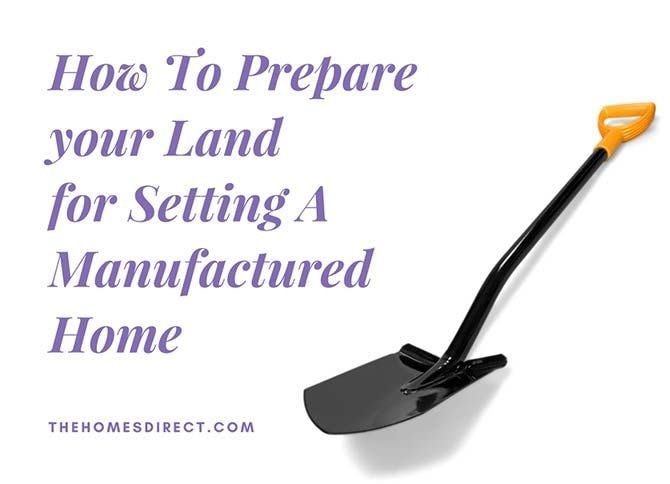Several options exist for setting a manufactured home. An existing piece of land, a manufactured home park, or selecting and purchasing a new property. This article discusses important considerations on how to prepare land for setting a manufactured home.

Good Drainage Is Important
The property must have good drainage to prevent problems with the foundation or the earth that the manufactured home is installed on. It may be necessary to have a soil test done to ascertain the drainage capability of the ground. This is also an important factor for installing a septic tank leach field. The drainage should prevent water build-up under the home as well as shifting and settling of the foundation. Good drainage will prevent damage to the home such as buckling of the floors and walls.
Selecting the Right Spot
A slightly elevated spot would be the best because water that cannot be absorbed would drain away. If the manufactured home is to be installed on the earth, then the Model Manufactured Home Installation Standards should be followed. Essentially, these standards recommend the following:
The ground should be compacted to a specified bearing capacity before the foundation is designed or before the home is installed on the ground. The soil capacity can often be determined by local soil records or by tests. A pocket penetrometer can be used, or another method may be specified by the authority having jurisdiction. If the soil appears to be composed of organic clays, peat or uncompacted fill or if it has any unusual conditions, then a registered professional geologist or a registered civil engineer should be consulted.
A vapor retarder should be installed under the home if it is to be enclosed with skirting or blocks. The vapor retarder keeps ground moisture out of the home. While good drainage is very important, so is the prevention of ground moisture from entering the home.
The earth underneath the home should be graded to create a crown and prevent a depression. This will ensure that water will travel away from the home.
A Note of Caution about Using a Cement Slab for the Installation
The earth around the slab foundation should be sloped away from the foundation to enable water to drain away. Otherwise, water will travel under the slab and cause the earth to shift when the soil expands and contracts. This will result in the slab cracking and the home sinking. It is also important to check the frost line since local code may require footings to be installed.
Make Sure the Land Is Accessible
The land must be accessible to the transport vehicles that will bring the home to the land for installation.
Check with the Manufacturer for Installation Instructions
The manufacturer may have specific instructions for the installing the home on either earth or a cement slab. These instructions may involve specifics regarding the site preparation.




